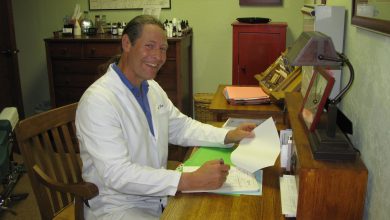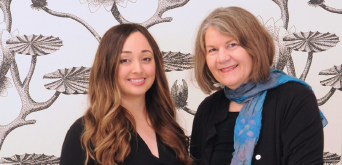Gaea Yudron – Sage’s Play: Celebrating the Richness of Life after 50
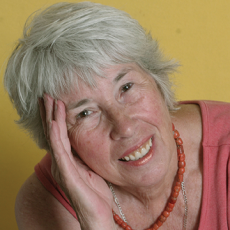 Author Gaea Yudron is a pioneer in the field of creative aging and she has a profound and unique message for older adults in the Rogue Valley and beyond. People who believe that youth is life’s high point and that everything afterward is downhill have got it all wrong, Gaea says. The years after 50 are a valuable stage of life filled with deeper understanding and growth opportunities. We are happiest as very young children and again as elders.
Author Gaea Yudron is a pioneer in the field of creative aging and she has a profound and unique message for older adults in the Rogue Valley and beyond. People who believe that youth is life’s high point and that everything afterward is downhill have got it all wrong, Gaea says. The years after 50 are a valuable stage of life filled with deeper understanding and growth opportunities. We are happiest as very young children and again as elders.
With 20 years’ experience as a practitioner of rapid eye therapy and 12 years as a professional hypnotherapist, Gaea has worked with people of all ages on a variety of issues. She helps people release past traumas, shift limiting patterns and develop new perspectives and tools for a happier life. Through Sage’s Play, Gaea also offers a variety of online and local seminars focused on enhancing wellbeing, creativity and joy.
Gaea, thanks for talking with us today. Please tell us how you got into the emerging field of creative aging.
Thank you, Shields. When I attended national conferences on aging 10 years ago, I saw that the spotlight was on frailty. However, most older adults are healthy and independent. I contemplated that and it led me to create Sage’s Play.
Our society fears and denies aging. Mockery and obnoxious jokes about aging are so common, nobody bats an eye at them. If you substituted the word “black” for “old” in a lot of these messages, it’s easy to see how prejudiced they are.
The older I grow, the less willing I am to accept negative stereotypes that pervade media, health care, the workplace and popular culture. I decided that I wanted to use my accumulated experience to develop age-positive programs and services. Sage’s Play is a vehicle for that.
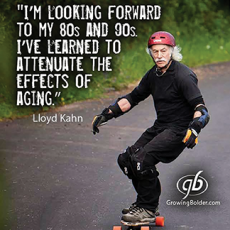 You want to introduce positive aging perspectives and programs for people over 50. Please tell us more about this.
You want to introduce positive aging perspectives and programs for people over 50. Please tell us more about this.
Aging is not a problem or some kind of disease, but a rich part of life. This perspective hasn’t reached the mainstream yet. Remember, corporations and medical enterprises make a lot of money from anti-aging products and medicalizing old age; there will be resistance to change.
People are still immersed in the anti-aging perspective, where older people try to pass for young. Black people used to try to pass for white; gay people used to try to pass for straight. Those groups have come a long way in establishing their human rights. But older people are still trying to pass for young to be accepted. This distracts them from the marvelous, particular gifts of later life.
The people who tend to get attracted to Sage’s Play programs are independent thinkers—often educated, thoughtful, innovative people. They want to optimize their experience and growth, not just on an outer level, but also on an inner level.
You offer specific services in rapid eye technology and hypnotherapy. Please tell us about these forms of healing and what conditions they are best suited for.
Both rapid eye technology and hypnotherapy engage the unconscious mind in order to create positive results. The relationship between the conscious and unconscious mind is often likened to an iceberg, with the conscious mind above water at the top, and the bulk of the iceberg– the unconscious mind –hidden underwater.
Most of us put our trust in the conscious mind. After all, it is logical and organized. Yet the greater part of our mental imprints and habits operate from the unconscious mind, which is a reservoir of feelings, thoughts, urges, and memories outside of conscious awareness. Accessing the unconscious mind directly with rapid eye therapy and hypnotherapy can bring relatively quick results compared to therapies that connect only with the conscious mind.
Rapid Eye Technology is a form of energy medicine developed by Ranae N. Johnson at the Rapid Eye Institute in Salem, Oregon. Utilizing natural reflexes such as rapid eye blinking, eye movements and breathing processes, RET sessions open up neural pathways where energetic memories are trapped. Clients release issues and emotions at a comfortable rate without reliving incidents. Rapid eye healing sessions may include the tapping therapy called Emotional Freedom Technique, creative visualization and other energy modalities.
Hypnotherapy alters consciousness so that the analytical left-hand side of the brain is tuned way down, while the non-analytical right-hand side becomes more alert. The conscious mind is inhibited, and the unconscious mind has a chance to play. Hypnotherapy brings clients into a state of deep relaxation and that makes it one of the easiest, most relaxed forms of healing. The body relaxes deeply. Breathing slows and deepens. The pulse rate drops. Feelings of discomfort decrease and drop away. And that’s just for starters. In the relaxation state, the unconscious mind can receive and anchor positive suggestions that lead to healing and change. Those suggestions actually come from the client and they are elicited earlier in the session.
Rapid eye technology is especially effective with trauma, including birth trauma, PTSD, abuse, phobias, and anxiety while hypnotherapy is effective in pain relief, insomnia, loss and grief, increasing creativity and issues of identity and meaning.
 Your work with Sage’s Play also involves seminars.
Your work with Sage’s Play also involves seminars.
Yes, In July, I ran a very successful online program titled “Into the Mystery: The Healing Power of Memoir and Life Review.” I have a new monthly program that focuses on play and creative expression. It is called “Free as a Bird Frolics.” It includes movement, voice, improvisational games, playing with story, archetypes and personas, and deep relaxation. Playfulness is so good for us. It increases creativity, resilience and wellbeing, allowing us to discover ourselves and others in new ways.“Gathering Together” is a monthly program offered by phone; people can participate from wherever they are. Each month has a particular theme. Details are available at www.sagesplay.org.
Can you talk a little about your latest book, Songs of the Inner Life?
Songs of the Inner Life is both a memoir and an example of life review, which is considered to be one of the important tasks of later life. In Songs of the Inner Life, I explore how the inner world of imagination and spirit interfaces with events in outer life. I think our lives are often illuminated by surprising coincidences. That has certainly been true for me. It even has a literary name—Magical Realism. I learned so much about self-acceptance, gratitude, forgiveness and love from reflecting on my life and writing about it. Sometimes it was a very difficult process, but it was incredibly worthwhile. The book is available at amazon.com.
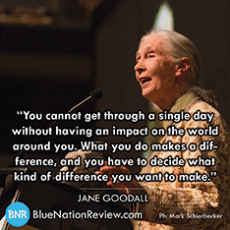 Can you please speak more about the different developmental tasks at various stages of life?
Can you please speak more about the different developmental tasks at various stages of life?
Each stage of life has developmental tasks. Toddlers must learn to walk and talk. Older children learn to read, count and play; they begin to develop values. There are developmental tasks in later life, too. Carl Jung described facing the reality of aging and dying as one of the important tasks. Jung also noted life review and letting go of the ego as other necessary late life work.
Psychologist Erick Erickson described “ego integrity” –coming to terms with and being content with one’s life– as the main work after 65. Rabbi Zalman Schachter, who inspired the spiritual eldering movement, defined some of the tasks of later life as mentoring, leaving a legacy, life review, and authenticity. The years after 50 are actually the apex of the life journey in terms of human development. The integrative work that older people do is much more layered and complex than self-explorations done earlier in life.
Sometimes older people are still deeply troubled from earlier life traumas.
You have experience in helping people working with this.
Yes; people may believe that asking for help shows weakness. Or they may be convinced that traumas can never be healed. But it can be done, and it is never too late. If people have endured a war, suffered abuse or terrible loss, they can release it neurologically and anchor new patterns. Rapid eye technology and hypnotherapy are very potent tools for this kind of work.
Please say more about how age prejudice can affect one’s psyche.
Prejudice is toxic and insidious. When we take in messages telling us that we are outdated, useless, foolish, senile, or ugly, we internalize them, usually unconsciously. Older people are sometimes apologetic or even ashamed. This is the result of internalized age prejudice. We start to embody or take on those stereotypes or spend an enormous amount of energy trying to pass for young. It’s such a waste of energy, and of course an enormous loss of human potential, leadership and wisdom.
Age prejudice is ingrained and unconscious for most people, both older and younger. With so many millions of people in the current age wave, we can create social change if we all work on it. Expand. Don’t contract. Make friends with younger folks. We used to live much more inter-generationally than we do. It’s invigorating and warm when generations are more seamless. It’s useful to be a good example, which you can do whether you are using a walker or doing the high jump. Share your gifts. Don’t settle for being invisible or marginalized.
 You’ve been practicing Buddhism for over 40 years. How does that influence your creative aging work?
You’ve been practicing Buddhism for over 40 years. How does that influence your creative aging work?
Contemplations on impermanence, old age, sickness and death are very central to everyday Buddhist practice, so I was not a candidate for denying the reality of aging and death. I began to ask myself, what can I do with this stage of life? Who am I becoming? How can I use this to be of benefit? How can I prepare for dying? I do include Buddhist psychology and contemplative techniques in my work, both in individual sessions and in seminars.
Gaea, please share a few client success stories with us.
One older woman with fibromyalgia had been depressed and incapacitated for many years. She was being treated by a homeopath; he and I worked together closely on her treatment. She had been raised in privilege, but felt unloved and misunderstood. I saw her for 17 sessions using rapid eye technology. The combination of homeopathy and rapid eye significantly improved her symptoms and overall mood. She began to participate in life with energy and appreciation.
I also worked with a woman who was terribly afraid of escalators and who could not drive beyond 50 miles of her house without becoming violently ill, a pattern that took 30 years to create. Three sessions of rapid eye technology shifted it completely. I’ve worked with many clients who have experienced sexual, emotional or even satanic ritual abuse. The combination of rapid eye technology and hypnotherapy has always been very effective, often within 5 or 6 sessions.
I have used hypnotherapy successfully to help people with chronic or acute pain. It is wonderful for that. One octogenarian client realized during our first session that she had already been lessening her pain using hypnotic suggestions on herself, so I taught her how to extend pain-free periods.
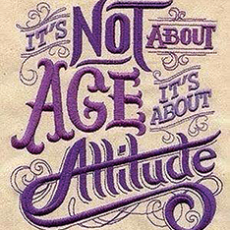 You have also developed an Audacious Aging Kit. Can you tell us about that?
You have also developed an Audacious Aging Kit. Can you tell us about that?
I created the kit as a sassy, playful pro-aging package. It contains a booklet, three buttons and a magnet. One button says: “Audacious Aging;” the second says: “BOLD;” and the third says: “Yes, I am Experienced.” The magnet says “Youth is a Gift of Nature, but Age is a Work of Art.” It is available at Bloomsbury Books and on my website.
What about your musical revue on aging, A New Wrinkle?
I spent 4 years working with composer Laura Rich on a witty, provocative musical revue with 20 songs interspersed with dramatic vignettes. The website contains more information, including mp3s and song lyrics. The revue is ready for the producer to appear!
Last but not least, this is a real opportunity for people in the community to meet you. How can they do that?
I am participating in a variety of public events. On October 3rd, I will have a table at the Ashland Book and Author Fair at SOU, and I will be giving a talk there. I will be talking at the Crones Counsel gathering in Mt. Shasta which runs from October 7-11th. I will be doing a reading from my book Songs of the Inner Life and will speak about the healing power of memoir and life review on Sunday, October 25th at 1pm at the Ashland Library. In addition to these events, people can connect by signing up for my newsletter at my website, www.sagesplay.org or just email or call.
Learn More
Sage’s Play
Box 3501, Ashland, OR 97520
541-890-7686
www.sagesplay.org


